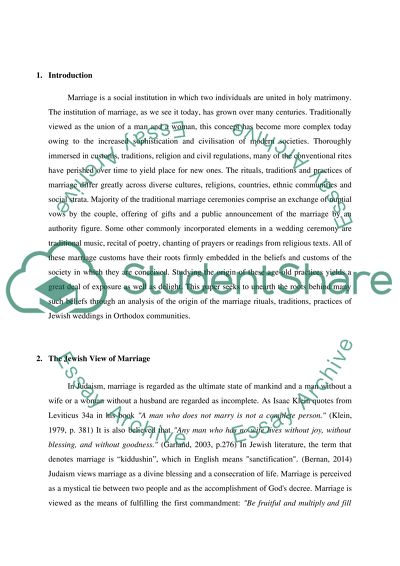Cite this document
(“Analysis of the Origin of the marriage rituals, traditions, practices Research Paper”, n.d.)
Analysis of the Origin of the marriage rituals, traditions, practices Research Paper. Retrieved from https://studentshare.org/anthropology/1626636-analysis-of-the-origin-of-the-marriage-rituals-traditions-practices-of-jewish-weddings-in-orthodox-communities
Analysis of the Origin of the marriage rituals, traditions, practices Research Paper. Retrieved from https://studentshare.org/anthropology/1626636-analysis-of-the-origin-of-the-marriage-rituals-traditions-practices-of-jewish-weddings-in-orthodox-communities
(Analysis of the Origin of the Marriage Rituals, Traditions, Practices Research Paper)
Analysis of the Origin of the Marriage Rituals, Traditions, Practices Research Paper. https://studentshare.org/anthropology/1626636-analysis-of-the-origin-of-the-marriage-rituals-traditions-practices-of-jewish-weddings-in-orthodox-communities.
Analysis of the Origin of the Marriage Rituals, Traditions, Practices Research Paper. https://studentshare.org/anthropology/1626636-analysis-of-the-origin-of-the-marriage-rituals-traditions-practices-of-jewish-weddings-in-orthodox-communities.
“Analysis of the Origin of the Marriage Rituals, Traditions, Practices Research Paper”, n.d. https://studentshare.org/anthropology/1626636-analysis-of-the-origin-of-the-marriage-rituals-traditions-practices-of-jewish-weddings-in-orthodox-communities.


